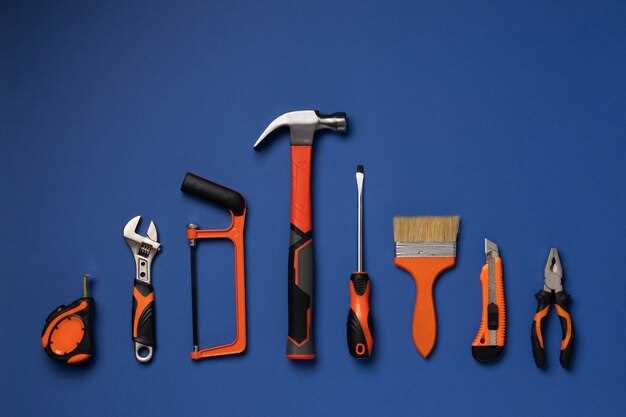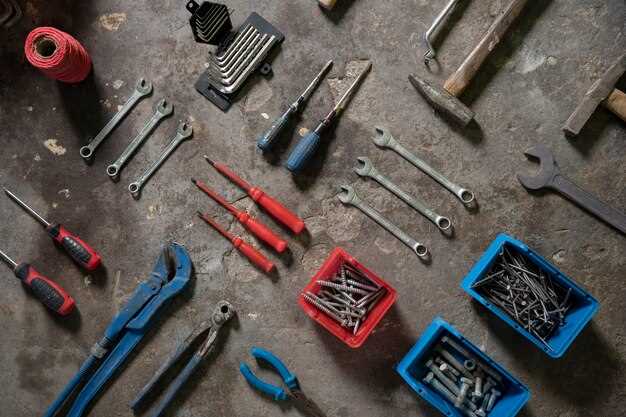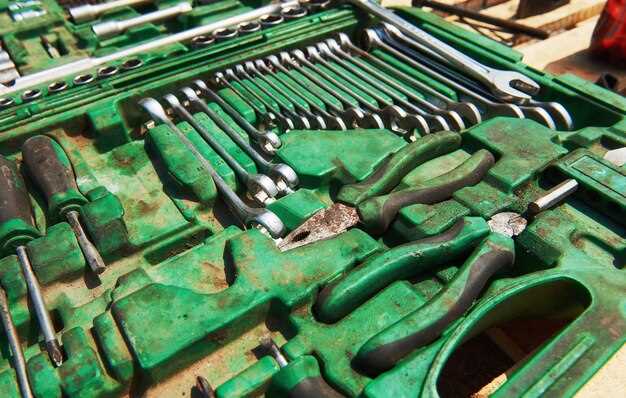
Rebuilding salvage vehicles can be a rewarding yet challenging endeavor, requiring a diverse set of tools to achieve the desired results. Whether you are a seasoned mechanic or a DIY enthusiast, having the right tools at your disposal is essential for a successful restoration project. From the initial assessment of the vehicle’s condition to the final touch-ups, each step demands specific tools that facilitate repair and enhancement.
Essential tools vary depending on the scope of work needed on the vehicle, but some are universally critical. Hand tools, such as wrenches and screwdrivers, play a crucial role in assembly and disassembly. Power tools, including drills and grinders, can significantly reduce the time it takes to complete certain tasks. Moreover, diagnostic tools help identify underlying issues that may not be immediately visible, informing your repair strategy.
In addition to the basic tools, specialized equipment may be necessary for advanced repairs. For instance, welding tools are indispensable when dealing with structural issues, while painting tools ensure that your vehicle not only runs well but looks great as well. Understanding which tools are most appropriate for your particular project will pave the way for a more efficient and effective rebuilding process.
Must-Have Hand Tools for Repairing Salvage Cars

Repairing salvage cars requires a comprehensive set of hand tools to ensure efficient and effective restoration. These tools are essential for various tasks, from disassembling damaged components to reassembling parts after repairs. Here are the indispensable hand tools you should have in your toolbox.
First and foremost, a quality socket set is crucial. This set typically includes different sizes of sockets and ratchets, allowing you to tackle a broad range of fasteners. When working on salvage vehicles, you’re likely to encounter rusted or stripped bolts, making a good set of sockets invaluable.
Another essential tool is a set of wrenches, including both standard and metric sizes. Adjustable wrenches can also be beneficial for gripping various fastener sizes. Wrenches are essential for tightening or loosening bolts in tight spaces, especially in areas where sockets cannot reach.
Additionally, screwdrivers are necessary for various applications. A set featuring flathead and Phillips-head screwdrivers in multiple sizes can help in dealing with interior components, engine covers, and electrical connections. A magnetic tip can enhance efficiency by holding screws in place during assembly.
Pliers should not be overlooked when it comes to salvaging cars. Needle-nose pliers are excellent for reaching into tight spots, while slip-joint pliers provide versatility for gripping different shapes and sizes. They are particularly useful for holding small components or wires during repair work.
For bodywork, a set of hammers and dollies is essential. These tools help reshape and smooth out damaged metal surfaces. A body hammer set allows for precise adjustments, while dollies provide support behind the metal, preventing crinkles and ensuring a smooth finish.
Tape measures, level tools, and straight edges are vital for ensuring that repaired parts are aligned correctly. Accurate measurements can be the difference between a quick fix and a long-term solution, especially when it comes to frame alignment and body panels.
Finally, don’t forget about safety tools, such as gloves and goggles. While not directly involved in repairs, these hand tools play a crucial role in ensuring that you can work safely while handling sharp or heavy materials.
Equipping yourself with these must-have hand tools will significantly enhance your ability to repair salvage cars effectively. Investing in high-quality tools not only improves efficiency but also ensures that repairs are done right the first time.
Power Tools That Streamline Vehicle Restoration Projects

Restoring salvage vehicles demands a collection of efficient power tools that can significantly enhance the repair process. These tools not only save time but also improve precision, resulting in a better overall finish for restoration projects.
One of the most essential power tools in vehicle restoration is the electric impact wrench. This tool simplifies the process of removing and tightening fasteners, particularly in tight spaces where manual tools may struggle. The high torque provided by an impact wrench enables users to tackle rusted or stubborn bolts quickly, making disassembly and reassembly more efficient.
An angle grinder is another indispensable tool for restoration projects. It serves multiple purposes, including cutting, grinding, and polishing metal surfaces. For vehicle bodies that require significant repair work, an angle grinder can help reshape and refine parts, ensuring they fit correctly and blend seamlessly with existing components.
For those dealing with bodywork, a pneumatic sander is crucial. This tool allows for quick removal of old paint and surface imperfections, ensuring a smooth finish before applying new layers. The speed and efficiency of pneumatic sanding minimize wear on the user while achieving a level of refinement that manual sanding often cannot match.
Furthermore, a battery-powered drill is important for drilling holes and making adjustments to various components of the vehicle. With the right drill bits, it can handle different materials, including metal and plastic, aiding in various aspects of the repair process.
Lastly, a portable band saw is valuable when it comes to cutting through thicker materials or complex shapes. Its versatility allows restorers to make precise cuts necessary for fitting new parts or modifying existing ones, which is often required in salvage vehicle restorations.
Investing in these power tools equips vehicle restorers with the means to execute repairs efficiently while achieving professional-quality results. The right tools can make a considerable difference in the success of a restoration project, turning a challenging task into a manageable and rewarding experience.
Diagnostic Equipment Essential for Salvage Vehicle Assessment
When evaluating salvage vehicles for potential repair, diagnostic equipment plays a critical role in identifying underlying issues. Modern vehicles are equipped with complex electronic systems, making it necessary to use advanced tools for accurate assessment.
One of the primary tools used is the On-Board Diagnostic (OBD) scanner. This device connects to the vehicle’s computer system to retrieve fault codes, allowing technicians to pinpoint specific issues related to the engine, transmission, and other essential components. Understanding these codes helps in estimating the extent of repairs needed and aids in prioritizing the work.
Another invaluable tool is the multimeter, which measures electrical parameters such as voltage, current, and resistance. This equipment is essential for diagnosing electrical problems, which are common in salvage vehicles. A multimeter can help check the functionality of various electrical components, ensuring that any necessary repairs can be accurately identified and performed.
Additionally, a compression tester is essential for assessing engine health. It measures the pressure within the cylinders, providing insight into the condition of the engine’s internal components. Low compression readings can indicate serious issues that may require extensive repairs, thus influencing the feasibility of restoring the vehicle.
While inspecting the structural integrity of salvage vehicles, a chassis inspection lift is crucial. This equipment allows for thorough examination of the vehicle’s undercarriage, identifying damage or rust that could compromise safety and stability during repair. Understanding the structural condition is vital for making informed decisions regarding the economic viability of the repair process.
Laser alignment tools also play a role in assessing suspension systems. Misalignment can lead to uneven tire wear and affect handling, making it crucial to ensure that any salvage vehicle is properly aligned before it’s deemed roadworthy. This equipment supports accurate repair efforts and enhances overall vehicle safety.
In conclusion, utilizing the right diagnostic equipment is vital for effectively assessing salvage vehicles. From OBD scanners to compression testers, these tools provide essential insights that guide repair decisions, ensuring that the restoration process is both effective and safe.
